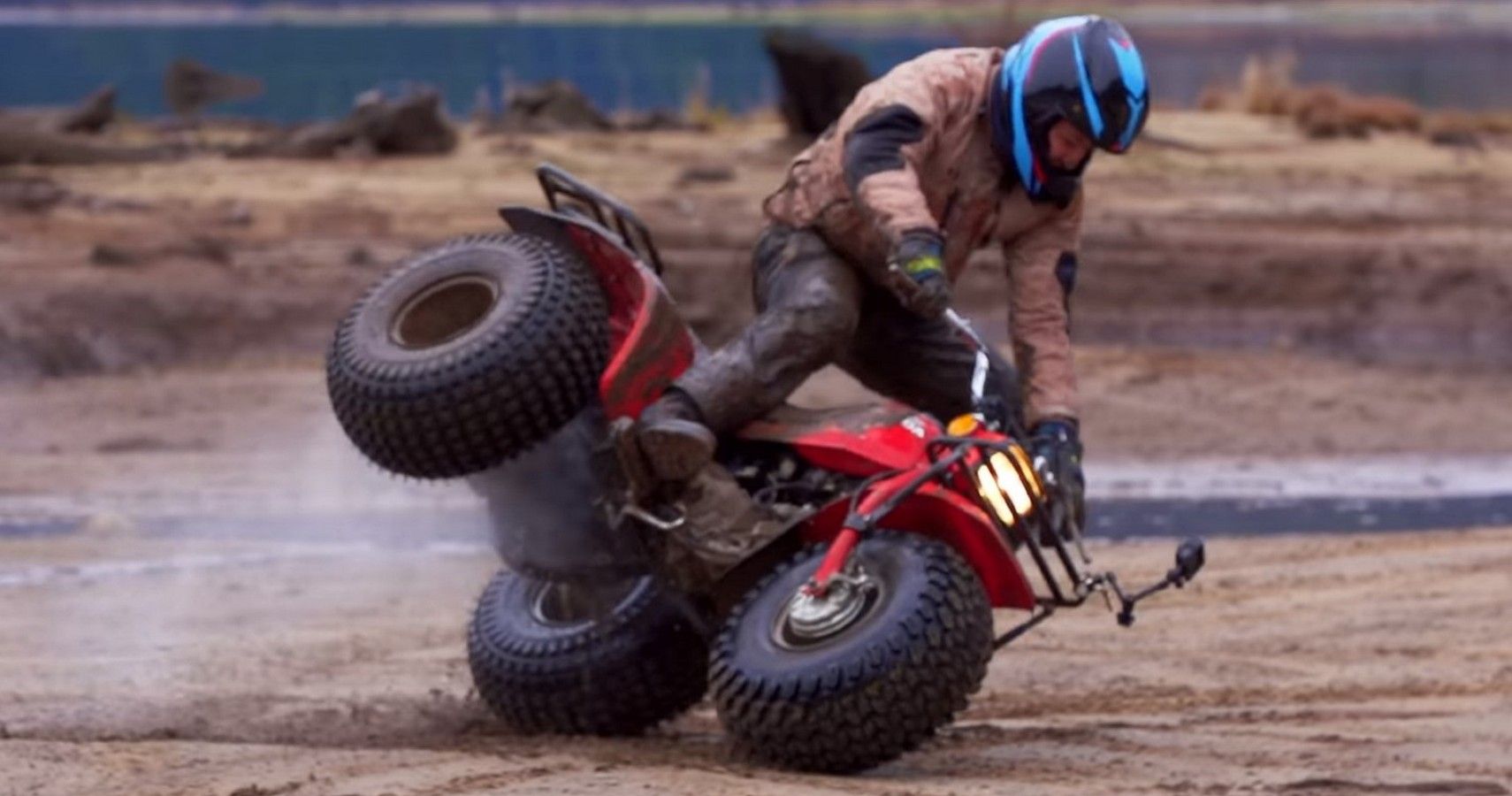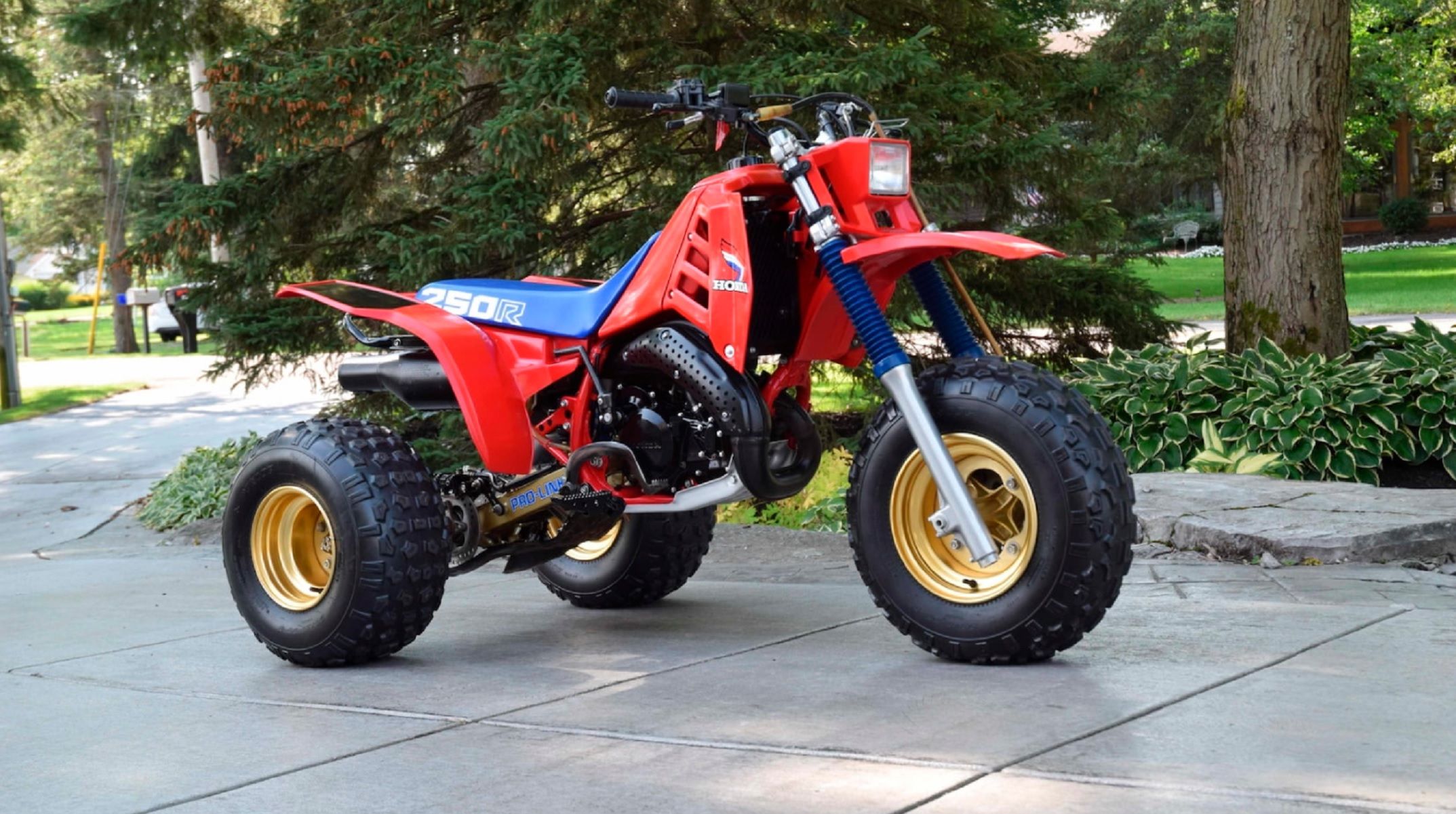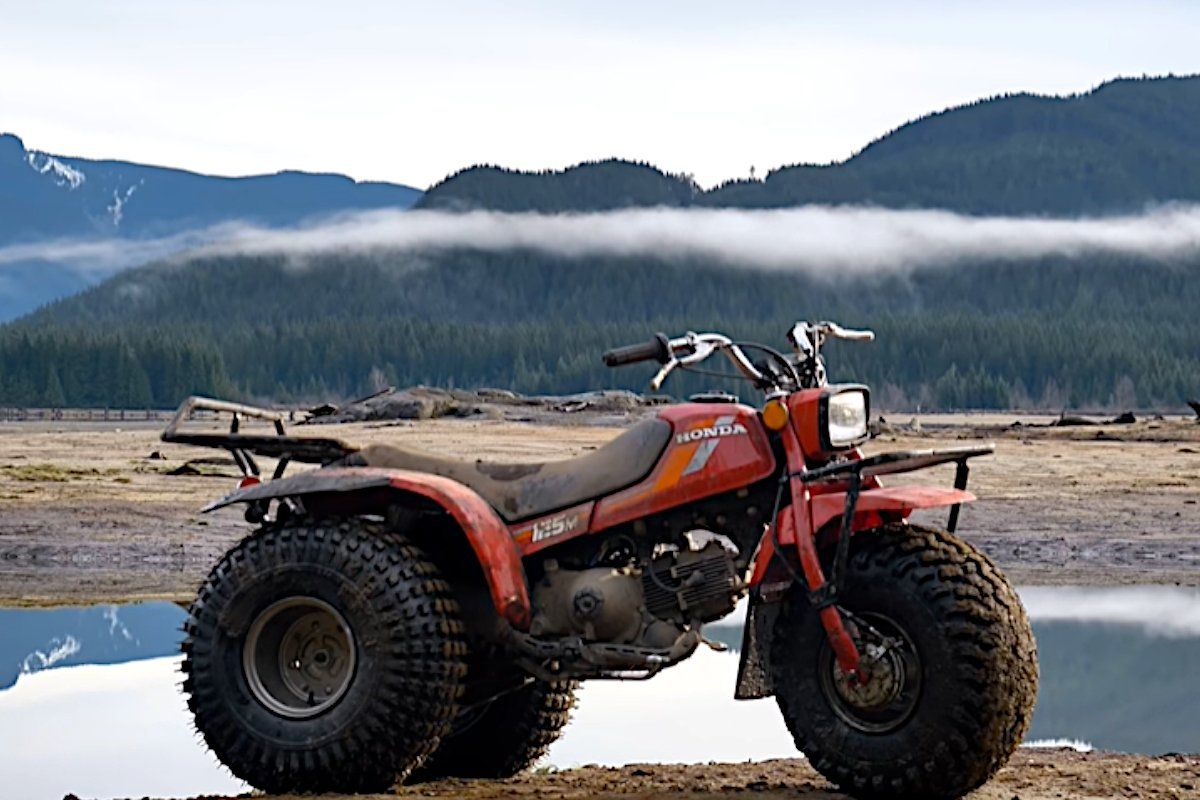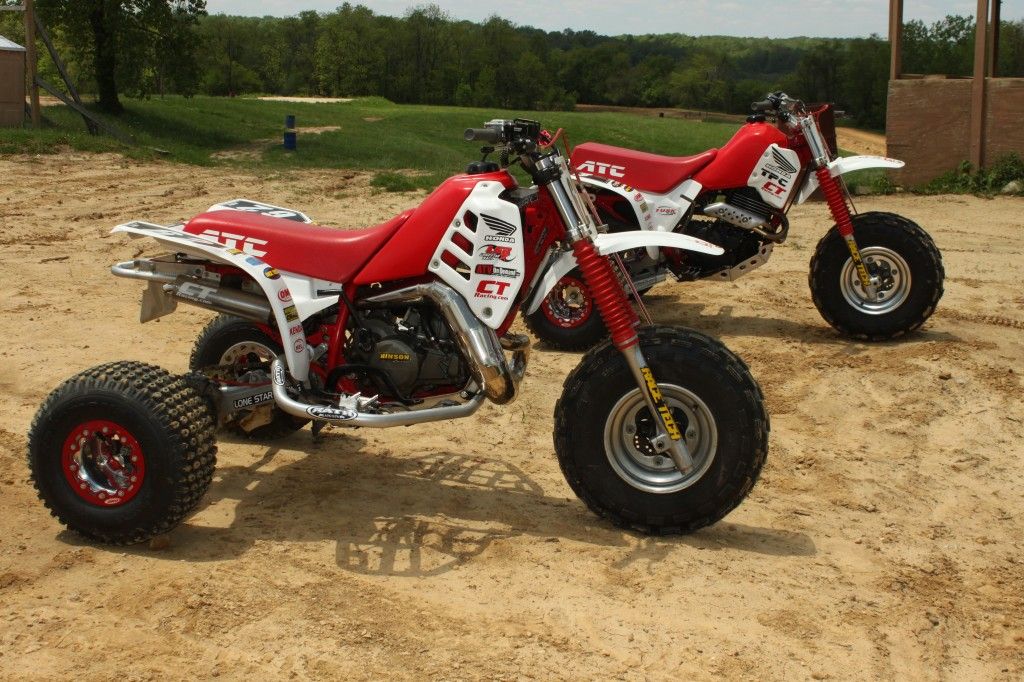At first glance, a three-wheeled ATV, or all-terrain vehicle, looked incredible and promising. Its top feature was its small size, perfect for children and families that were looking for some excitement. Yet what seemed like a harmless opportunity for some recreational enjoyment on trails and spending time outside proved dangerous.
Consumers would fall off three-wheeled ATVs and got seriously hurt. There were even deaths reported. Three-wheeled ATVs were deemed a hazard and were banned in 1988.
Three-wheeled ATVs had a troubled history, and we're breaking down the characteristics that were considered unsafe.
Its Small Size Was Deceptive
A three-wheeled ATV had one wheel in the front and two wheels in the back. Overall, ATVs are known for having large tires. Three-wheeled ATVs had one seat available and they had an affordable price. Even today, it's impossible not to find an inexpensive ATV, and multiple ATVs cater to a variety of interests and preferences. Unlike the three-wheeled ATVs, some current ATVs are so large that it's both impressive and staggering.
One of the reasons manufacturers created such a vehicle was because they wanted to market a versatile product that can be utilized all-year round. Snowmobiles were popular, but they were only used seasonally. Consumers might have been hesitant to buy something like a snowmobile if they could only enjoy it a certain time of the year and believed they weren't going to get their money's worth. A three-wheeled ATV was a more enticing choice. A January 2021 CarScoops article pointed out that it was also created for work purposes, saying that, "Designed for farms, it was stable enough for a farmer to run around their field, light enough not to get bogged down in the water, and simple enough to not cost an arm and a leg- a poor choice of words, if ever there was one."
Third-wheeled ATVs reached the United States in the 1970s, and sales soared. A three-wheeled ATV appeared in television shows and one James Bond movie. One of the reasons why it was so popular was that a three-wheeled ATV was noticeably more miniscule than other vehicles. Children, teenagers, and families loved this and were drawn to this ATV type.
Due to the extensive differences between a car and a three-wheeled ATV, it could have taken some time to get comfortable with this ATV. It was recommended that drivers on three-wheeled ATVs master throttle steering, a method in which the driver makes sure that the throttle disrupts resistance with the back tires.
While children could reach the handlebars and thought that riding was a great way to have some fun, there were plenty of flaws on this ATV. Poor suspension translated to below-average stability and difficulty controlling the ATV. Its handling was definitely a negative trait, as it was difficult to turn. The solid axle was outdated. The possibility of tipping over increased as speed increased.
Children were especially prone to accidents due to their petite size. An adult's weight could be enough to achieve a proper balance while driving the ATV. However, a child's small figure meant that the ATV had higher chances of turning over and crushing the child.
The Amount of Injuries Was Alarming
Losing control of the vehicle meant the driver could hurt himself and suffer devastating injuries. A MotoShark article mentioned that there were over 10,000 deaths linked to ATVs between 1982 and 2009. The three-wheeled ATV's image was bruised, and it was known as the killer tricycle and death machine. An April 1988 New York Times article reported that three-wheeled ATVs were responsible for 1,000 deaths between 1983 and 1988.
These vehicles were officially prohibited in 1988. The All-terrain Vehicle Safety Institute was established in that same year to give guidance about these vehicles to new riders. To this day, rules are constantly evolving: The United States Consumer Product Safety Commission released new laws about ATV lighting in 2019.
Other Effects Also Impacted The Environment
There were various other implications surrounding the ATV industry. ATV lovers may have unknowingly trespassed into certain regions. This was especially true in rural areas, as this was a place where it might have been difficult to differentiate between public and private property.
The three-wheeled ATVs could have additionally ruined snowmobile trails and damaged lands that environmentalists were studying.
Altogether, three-wheeled ATVs were hazardous, and the younger the person, the more likely an injury was going to occur. It's important to note that four-wheeled ATVs are allowed. Nevertheless, there are certain rules to ensure safety: While each state has different rules, the majority of states say that children under 16 can't operate an ATV. Those who are older can still have some fun in their backyard or on vacation and drive an ATV, as long as they're vigilant and are mindful of their surroundings. ATVs remain fun to drive.
Some ATVs are truly a force, and people reading the three-wheeled ATV news shouldn't stay discouraged: There are reliable ATVs out there that have even won awards.




